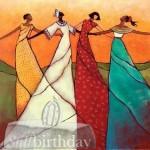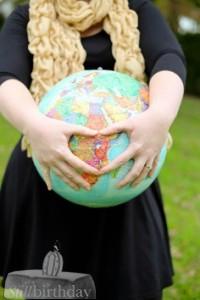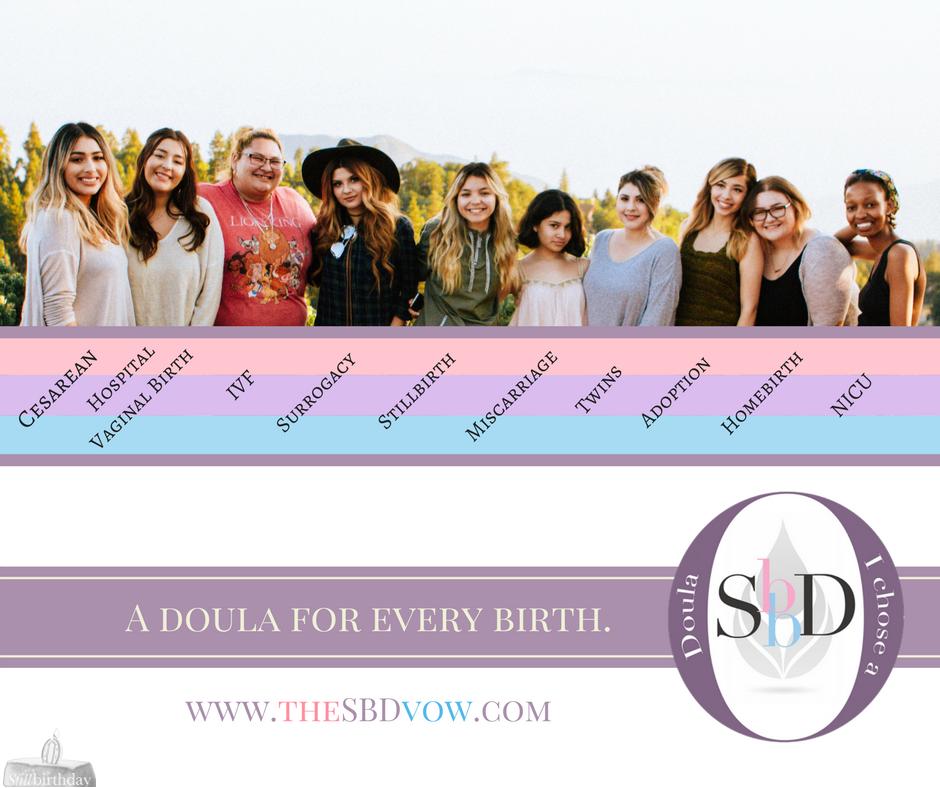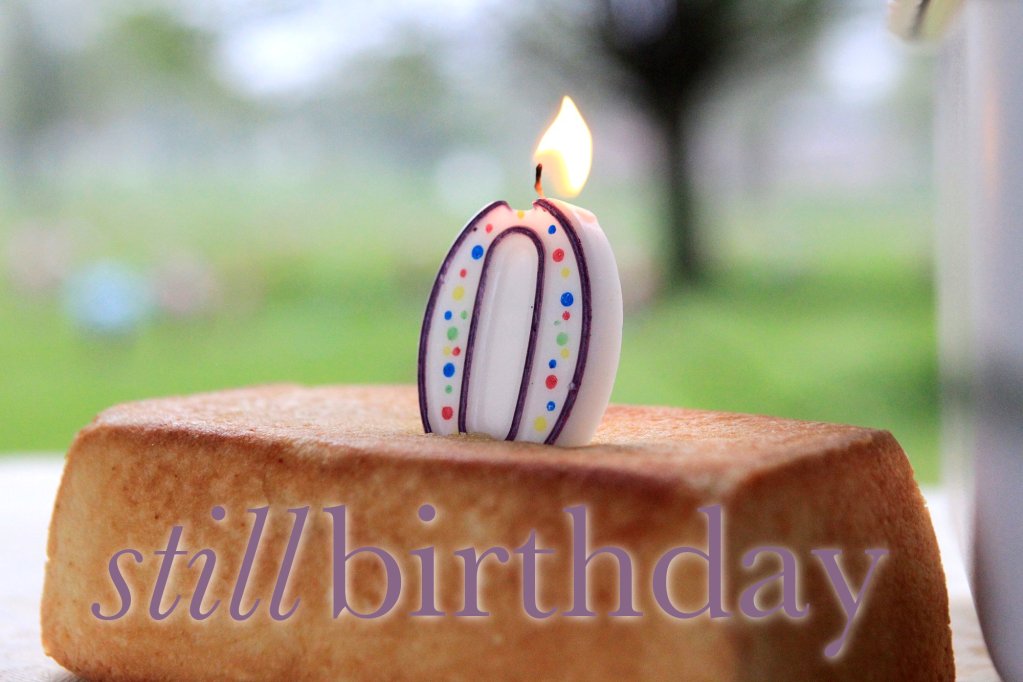This segment of stillbirthday is a collection of perspectives, historically and present, from various belief systems, surrounding both birth and bereavement.
These were researched and submitted by SBD doula students in their very first week of our training, and only those that do not include very personal experiences are included, to preserve confidentiality and authenticity in the student/trainer relationship. Such experiences are certainly welcome and embraced, particularly because this assignment may be the very first time the question is directly asked which can lead to speaking about abuses of power in religious, cultural or other beliefs that the individual may have endured, and as such sharing is sacred, are not included here in this particular collection.
This project is also intentionally not based on precise accuracy but on the inclusion of interpretation and the individual’s own perspective, as cherishing diversity authentically isn’t only about receiving data while keeping fact divided from feeling, but on synthesizing information and marveling at the orchestration of our differences and our similarities. You can also visit our Bereavement Diversity page for further resources and support.
Because the stillbirthday training is constantly being shaped by the beautiful, rich diversity of its students, you are invited to contribute your knowledge and wisdom about any tradition, ritual, or belief you know of surrounding birth and/or bereavement. You can use the form below, or you can share right in the training session.
“Diverse Humility: To practice diverse (cultural) humility, one must be willing to gain knowledge on different aspects of cultural and societal diversity and expression. These may include beliefs with respect to race, ethnicity, national origin, color, sex, sexual orientation, gender identity or expression, age, marital status, political belief, religion, immigration status, and mental or physical disability, etc. We must be able to use this knowledge to engage in dialogue that is helpful, respectful, and supportive when dealing with others.” – Rose Quintilian, SBD student
{Adoption Maternity: A Mustard Seed}
“Many labor and delivery courses are designed around a couple having a baby not a single woman, and may cause her not to reach out to these services. If her pregnancy is faced with complications people may feel she got pregnant on her own and so she can handle it on her own leaving her with little to no support. People with highly religious views may feel that medical conception is not “right” and may judge her for “paying to make a baby”. She faces questions not only from common people in our culture but from medical professionals as well. Things like, why are you not married? Don’t you want a Husband to help you? Are you a lesbian? All of these questions may lead her into keeping her pregnancy and related choices secret as long as she can and or refraining from medical care due to fear of judgment. If her pregnancy ends in a loss she faces more religious and cultural questions and ridicule. People may say that ‘God chose to take her baby so it would not grow up in a fatherless home’ or ‘it’s better for you and the baby’.”
” Mexican beliefs surrounding pregnancy and childbirth are quite varied. However, traditionally a pregnancy is not considered a medical condition. Mexican mothers are encouraged to eat and sleep well and walk. Most women will prefer a female provider for exams. Many Latinas will satisfy pregnancy craings or else the child will have birth marks. Milk is avoided because it can cause difficult labor and large babies.

“Most women in Japanese culture stop working once they become pregnant. It is very rare for genetic testing to be done in Japan because of the wide cultural view that each fetus is a work in progress or “perfectible.” Men are not often included in the process of pregnancy and birth because it is not occurring their bodies. Many women will go to a Shinto shrine around 5 months pregnant to pray for safe childbirth and purchase a sash that is worn around the abdomen to keep the uterus warm and keep the fetus in a good position and from growing to large.” 
“A rather simple example of cultural influences is present day America and it’s workforce mentality. With women entering a workforce that is not always family-centric; a woman, particularly one experiencing and early loss, is often looked at as if nothing is happening. An early miscarriage can take days or weeks to complete and yet women are often expected to work through it as though nothing is happening. This can lead to significant anger and prolonged grief as the mother is forced to stifle her mourning.”

“In Tampangallo, the poorer Torajans bury their babies, who do not yet have teeth, in a tree. They carve a hole into the tree and put the child to rest inside the tree then cover the hole with coconut fibre. The tree then grows around the baby and absorbs it. The people believe that the babies will grow up with the tree and reach the heavens with the trees growth. Many babies are buried in the same tree and it has been done this way for centuries. These trees hold a great deal of spiritual significance. I like this because it is what a whole section of a community does. It is also said that the tree has an extremely peaceful atmosphere around it.
It is not shunned or hidden.”

“The Sámi (indigenous people of Scandinavia) believe that the dead and the living are “two halves of the same family” (Rydving, Håkan), and that religion is a continual conversation between the two halves. The goddess of the dead is an old mother figure, and the goddesses of women and children, fertility and pregnancy are all related (the goddess of childbirth, Sarakka, being the most important of all the goddesses). I think it’s interesting that the goddess of their ‘underworld’ is a mother, and that the most important goddesses in their theology are protectors of women and children.” 
“Early Native American Indian women were given a special menstruation hut to give thanks for their monthly cycles as an origin of life and a deep source of wisdom. They took this time to rest from daily chores and bond with other menstruating women. Pregnant women were encouraged not to eat black walnuts as it was thought to make the babies nose large. They also abstained from eating raccoon and speckled trout as well. Although some tribes believed in solitary birth, most women in other tribes were assisted by elder tribal women. In the Kickapoo tribe, men were allowed to witness and assist in the birth if needed. Most if not all birthed standing or on their knees. It was thought that the baby would not descend if the mother was laying on her back. The babies were rarely “caught” by human hands but instead were“welcomed by the earth” onto a pile of leaves. The Shawnee tribe required the mother to spend 10 days of discovery and nursing of her baby before the father could see either of them. However in other tribes the father was not to leave the baby and mother’s side for 10 days then at that time a smoke ceremony was performed to give thanks to mother earth for another offspring that would be taught to care for her land. In the Navajo tribe when a pregnancy loss occurred the tribe elders would bury the placenta within the tribe’s reservation as a binder to the ancestral land and its people. In the cases of infant or child loss, the Ojibwa tribe elders would cut off the hair of the deceased infant or child and the hair would be made into a “doll of sorrow” that the mother would then carry for a year.”

“At San Gervasio on Cozumel Island, Mexico, lies ruins dedicated to the Mayan Goddess of fertility, Ixchel. It is said that all Mayan women would make this pilgrimage at least once in their lifetimes to San Gervasio. This pilgrimage would take many days to walk and travel from mainland Mexico, but it was thought necessary. They would offer Ixchel offerings, and often stay during fertile times in hopes of the Goddess to bless them and protect their child. If Mayan women did not make the pilgrimage and something happened to the child, the woman was blamed for not giving Ixchel offerings. I had the pleasure of visiting San Gervasio this past Winter. The area is tropical but beautifully wild even today. I walked on paths that the Mayan women walked hundreds of years ago, trying to soak in what perhaps they received from this sacred place. From a cultural perspective, it makes sense that society would dictate women to travel to San Gervasio- where the fruit trees flower year round, the land is lush for planting, and the weather is warm. From a religious standpoint, Ixchel (who was also the goddess of the harvest) would bless those who came to her because perhaps the risk of infection and disease was lower with the vitamins and minerals the women were receiving from the land surrounding San Gervasio.” 
“Tarahumara Indian women traditionally have labored alone, with it being considered taboo to watch a woman labor, and without asking for help as it is considered a sign of weakness. The only labor support is a drink, prepared by a curandera, to help the mother sleep during labor. The mother would give birth on a mat that she wove while pregnant. Tarahumara mothers have died in childbirth because of postpartum hemorrhage and labor complications from inadequate labor support. “
“Grieving in China follows different stages marked by ceremonies and customs, which depends on the role of the deceased in the family, as well as the grieving family members’ relationship to the deceased. The mourning and grieving process reflect traditional Han Chinese beliefs about family and the afterlife. It is only the responsibility of the young to show their respect by holding a funeral, elders should not hold a funeral for the young. Those who die young are buried without a ceremony by their parents. Mourning traditionally lasts 100 days for the family, although the sons of the deceased should not wear red or get married for six months following the parent’s death. After 100 days, a final prayer ceremony is held to end the mourning period.”

“The Catholic Church has very specific rules about abortion. One may never directly end life, but it is acceptable to allow life to end indirectly by addressing a potentially life threatening situation. For example in the event of Ectopic pregnancy, the mother may not use medication or surgical means to directly end the life of the fetus (by scraping the embryo out of the fallopian tube while preserving the tube). It is acceptable to remove the entire section of the tube in which the embryo has implanted, therby indirectly causing the death of the embryo while saving the mother. Many doctors present the first two options with moral ambiguity, and discount the third entirely with no thought to the religious preference of the family. A mother who is against elective abortion (whether Catholic or not) who wishes to preserve her reproductive integrity, may choose one of the first two options, thereby going against her moral judgements on elective abortion. This may lead to feelings of guilt and shame. She may not feel that she has the right to mourn, especially if she is feeling judged by friends and family.”

“Many people from the Jewish faith place a high value on respecting the body of the deceased person. Generally, autopsies and embalming of the body are prohibited, and some believe that viewing the body is disrespectful. Music and flowers are generally discouraged. However, in this faith, they place a high value on providing the family with emotional support. The family mourns together for one week in their home, without cooking or doing any work. They leave a candle burning for their lost loved one and pray daily for their loved one and for their own peace. Some families even refuse visitors for three days following the burial so that they may lament. The family will then enter a mourning period which lasts one year. After one year, they will have a ceremony unveiling the tombstone of the deceased person. As a doula, it would be very important to understand the wishes of the family and support them during this time, while respecting their religious views. For example, it would be important to assess whether a Jewish family would want pictures of their stillborn child, would want to hold the child, would want pictures or other mementos of the birth, all while maintaining respect for the child’s body. It would also be important to give the family tools to use between the birth and burial, before they begin their week long mourning in their home, so that they may grief and heal during that time.”

“In the Muslim Tradition, when a person passes away, the women or spouse of the deceased, wash the body three times (or more if necessary.) The body is also wrapped in an inexpensive white cloth, and wrapped three times. Customarily, families can grieve for forty days, with close family and friends coming by to support for three days, while women are granted the ability to grieve for four months and ten days.”

“It is the tradition of the Tarahumaran people for the woman to give birth alone holding on to a tree branch. In an article on Tarahumara Religion by Victor M. Mendoza he explains another tradition of their culture, “the umbilical cord, which is believed to have some magical connection with the future life of the child, is never thrown away. That of the girl is generally buried near or under the hearth so that she may become a good housekeeper; that of a boy in the cornfield so that he may be a good farmer. But if the father of a boy wants his son to be a good hunter, he may hang his navel cord on a tree”. The Tarahumaras bury the cord in the place where the child is born so that it will not grow up stupid. http://www.indigenouspeople.net/tararel.htm. In his book, Mexico and the United States: Ambivalent Vistas, William Dirk Raat states that in 2004 the Tarahumara “suffered from a sixty present infant mortality rate”.

“The Japanese consider motherhood as the most important contribution a woman could make to Japanese society, and in my findings there are culturally significant celebrations that enhance the value of life which may contribute to such amazing statistics in Japan. Oshichiya Meimeishiki is a ceremonial baby naming celebration that was carried out when the baby turned 7 days old with family and close friends in attendance. Also Okuizome is a Japanese tradition that parents carry out on the 100th day of life. Families get together to prepare a child’s first meal. By performing the ritual, they hope their child will always have good food and will never go hungry. http://blackcabbit.wordpress.com/2010/07/14/babycelebrations1/ http://blackcabbit.wordpress.com/2010/06/17/babycelebrations4/ The movement to improve overall mother-child health in Japan started in 1936, when a ‘Married Women’s Voluntary Groups for Mother-Child Health and Welfare’ established thanks to the help of a community organization named “Imperial Gift Foundation”. It continued with issuing a ‘Maternal and Child Health Handbook’ by local government in Japan and creating various types of maternal and child health services. This handbook is a medical monitoring card that actually aims to promote the empowerment of women, since women possess their actual health record and participate as agents in their own care. Midwives are/were valued lay midwives who not only work with OBs but also if midwives were involved in a birth, they stayed with mom for several hours after delivery, and then visited every day for at least one week to check on the health of the mother and baby. Afterwards and especially in rural areas, the midwife would still continue to visit occasionally for several months. Japanese obstetricians have a relatively limited involvement in uncomplicated births, and are less inclined to use medical intervention, as they consider birth a physiological, rather than a potentially pathological event. Birthing practices in Japan tend to be more natural and includes avoidance of anesthesia. In 2009 Japan was considered the best place in the world to give birth. This level of care and social culture leads me to believe that Japan’s value in family and birth creates community and trust in a woman’s natural birthing ability. Which leads to better outcomes for mothers and babies. http://www.ncbi.nlm.nih.gov/pmc/articles/PMC2889847/”

“I recently watched a documentary called “It’s a Girl” and it explores gendercide in India and China. In these cultures, many (not all) people want sons not daughters. It has become a problem because elective abortions are being done if they find out that the baby they are carrying is a girl. Baby girls are also being killed not long after birth in many areas. I feel that infant loss may be seen very differently in these cultures. In India they want sons to help the father with work, but daughters they raise to give to another family and they must provide a dowry when she is married. Many of the mothers interview said they killed their infant daughters because they could not afford to keep them. Some of the mothers I saw from India did not seem attached to their children or to be upset about killing their own children. Their feelings about pregnancy and infant loss are very different to what we see in America and Europe. They do not seem as attached to their children or as grift stricken when a loss (especially of a girl) happens. I feel that the women probably are suffering inwardly, but in these cultures “life must go on” so they are not given the time or acknowledgment to grieve.”

“I believe it is our culture nowadays for medical professionals to push patients into terminating pregnancies. Not one single medical professional we came in contact with was for our decision to carry to term. It was/is against our religious beliefs to terminate a pregnancy for any reason.”

In the Romanian culture that I’m coming from there is a superstition that if you are pregnant and you see a person with abnormalities (such as deafness, paralysis, missing limbs, various other physical anomalies or diseases), this can affect how the baby grows and the baby can “catch” the same anomaly or disease. If you see such a person you’re supposed to say “you are like yourself and my baby is like me.” Needless to say, this superstition is not based on reality. It also shows a lack of empathy that is prevalent in our culture unfortunately, and also the (more natural) strong fears that surround the unknown of pregnancy, life and all the hard stuff that it sometimes brings.

Bengkung is a traditional Malaysian belly binding method. Essentially it is a practice of tying a long strip of cloth around the abdomen during the postpartum recovery period to ensure a strong support to our womb after childbirth. It is very long, covering from under the chest all the way to below the hips, so it supports not only the waist, but the ribcage and hips. It is known to help heal a condition called diastasis recti (separation of the abdominal muscles). It is now becoming more popular in Western cultures as well as other countries around the world. I think that this tradition may be of physical benefit, speeding up postpartum recovery, but it is also a lovely tradition and way to honour the birthing woman’s body.

Aboriginal is a word to describe First Nations, Inuit, and Métis people. These are the first peoples of Canada. Within the Aboriginal population of Canada, there is much diversity in culture and tradition. Each cultural group will be unique in character and language, and although a great diversity exists among the various tribes- there is a common core belief in living in harmony with nature. This connection and reverence for the Earth as our Mother is the foundation of First Nations spirituality. ( from Assembly of First Nations – Honoring Earth ) “From the realms of the human world, the sky dwellers, the water beings, forest creatures and all other forms of life, the beautiful Mother Earth gives birth to, nurtures and sustains all life. Mother Earth provides us with our food and clean water sources. She bestows us with materials for our homes, clothes and tools. She provides all life with raw materials for our industry, ingenuity and progress. She is the basis of who we are as “real human beings” that include our languages, our cultures, our knowledge and wisdom to know how to conduct ourselves in a good way. If we listen from the place of connection to the Spirit That Lives in All Things, Mother Earth teaches what we need to know to take care of her and all her children. All are provided by our mother, the Earth. Indigenous peoples are caretakers of Mother Earth and realize and respect her gifts of water, air and fire. First Nations peoples’ have a special relationship with the earth and all living things in it. This relationship is based on a profound spiritual connection to Mother Earth that guided indigenous peoples to practice reverence, humility and reciprocity. It is also based on the subsistence needs and values extending back thousands of years. Hunting, gathering, and fishing to secure food includes harvesting food for self, family, the elderly, widows, the community, and for ceremonial purposes. Everything is taken and used with the understanding that we take only what we need, and we must use great care and be aware of how we take and how much of it so that future generations will not be put in peril.” In modern First Nations communities, each will have it’s own mix of modern and traditional cultural influences. Tribal leaders and community members work to preserve and promote the ancient traditions and knowledge. These include carving, art, jewelry making, weaving and creating textiles, language, traditional cooking methods (such as smoked salmon), and tribal journeys in canoes following traditional routes. Indigenous legends and knowledge are often passed down through generations in story form, or through song and traditional dance. The Elders are highly respected and appreciated in the community as the primary sources of knowledge and skills which are passed down from generation to generation. Much value is placed on the importance of The Elders in every First Nations community. “Traditionally, First Nations maternity care was provided by community-based midwives trained through apprenticeship. The hands-on training for a community-based midwife often began in her teenage years with observation of childbirth practices. Practices were handed down by oral tradition and included prescriptions for healthy diet and moderate exercise during pregnancy; intrapartum care with preparation of clean cloths, moss, and scissors; the involvement of certain supportive family and community members; careful attention to the sacred handling of the placenta and umbilical cord; and careful wrapping of the newborn in fur. Complications, sometimes fatal, included retained placentas and stillbirths.” resource http://www.ncbi.nlm.nih.gov/pubmed/21272432 “I would like for traditions and cultural beliefs around birth to be incorporated so women who are disconnected from their community can start making those first connections… if you live off reserve or live with a family who had been stolen; it’s incredibly hard to find those songs, prayers, beliefs, like burying your placenta, stories… all the things that would be there if our culture had been un-interrupted… the risk is that our Elders are really getting elderly. Is this knowledge being passed on? And what is going to happen to the youth if there isn’t a way to preserve this?” — Aboriginal midwife, Aimee Carbonneau Personal note: As a descendant of First Nations women, this project gave me an opportunity to explore my roots a little more deeply than I had before. In my researching, I have come across a thesis, written in 1998 by woman completing her degree in First Nations studies. I think it is an excellent window into Aboriginal birthing methods, past and present. These words from the author, I love these words. “I am a woman”. “When asked to describe myself, more often than not, I begin with the words ‘I am a woman’. It is in this definition that I find completeness and fulfillment, it also directs my experiences and the perspectives derived from such experiences. Culturally constructed or biologically based, my self image contains elements of both, and although at times confusing and conflicting, a host of other roles both imposed and chosen fill up my life; mother-to-be, wife, daughter, sister, student, intellectual, friend. Exploring this topic and conducting this research has added one more experience to the myriad of others influencing my existence and outlook not only in the way I define myself, but in the way I see the world.” Her lovely thesis is below. I feel I could not have written on this subject any better than it is presented here. http://www.collectionscanada.gc.ca/obj/s4/f2/dsk2/ftp03/MQ62495.pdf

Do you have one you’d like to share? Are you an SBD student? Would you like to know more about our diversity team? [contact-form-7 404 "Not Found"]
Links & Resources that SBD Students Find Interesting:






